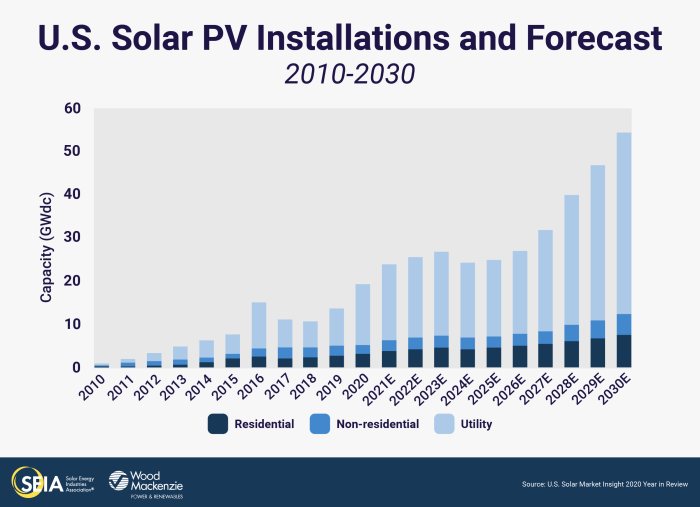The Rise of Solar Energy in America: A Story of Adoption and Growth
This moment allows us to thoroughly investigate the intriguing concept surrounding The Rise of Solar Energy in America: A Story of Adoption and Growth. We will present thoughtful information and offer innovative ideas.
Video about The Rise of Solar Energy in America: A Story of Adoption and Growth
The Rise of Solar Energy in America: A Story of Adoption and Growth

As the world continues to grapple with the challenges of climate change, environmental degradation, and energy security, the adoption of solar energy in America has become a beacon of hope for a sustainable future. Over the past decade, the United States has witnessed an unprecedented growth in solar energy adoption, driven by declining costs, improving technology, and favorable policies. This article explores the current state of solar energy adoption in America, its benefits, challenges, and future prospects.
Historical Context
The United States has a long history of embracing solar energy, dating back to the 1950s when the first solar panels were developed. However, it wasn’t until the 1970s that solar energy started to gain traction as a viable alternative to fossil fuels. The oil embargo of 1973 and the subsequent energy crisis of 1979 spurred interest in renewable energy sources, including solar power. Despite these early efforts, solar energy accounted for less than 1% of the country’s energy mix until the late 2000s.
The Turning Point
The turning point for solar energy adoption in America came in 2008 with the passage of the Solar Investment Tax Credit (ITC). The ITC allowed homeowners and businesses to claim a tax credit of up to 30% of the total cost of solar panel installation, reducing the upfront costs and making solar energy more competitive with fossil fuels. The American Recovery and Reinvestment Act (ARRA) of 2009 further accelerated the growth of the solar industry by providing billions of dollars in grants and loans for renewable energy projects.
Current State of Solar Energy Adoption
Today, solar energy is one of the fastest-growing sources of electricity in America. According to the Solar Energy Industries Association (SEIA), the U.S. solar market has grown from 1.2 gigawatts (GW) in 2008 to over 100 GW in 2022, with solar energy accounting for approximately 2.5% of the country’s total electricity generation. The solar industry has created over 230,000 jobs and invested more than $250 billion in the U.S. economy.
The growth of solar energy has been driven primarily by the residential and utility-scale markets. Residential solar installations have increased by over 1,000% since 2008, with California, Arizona, and Texas leading the way. Utility-scale solar projects have also gained significant traction, with companies like NextEra Energy and Duke Energy investing heavily in large-scale solar farms.
Benefits of Solar Energy
The benefits of solar energy are numerous and far-reaching. Some of the most significant advantages include:
- Renewable and Sustainable: Solar energy is a renewable source of energy, which means it is sustainable and won’t run out.
- Zero Emissions: Solar energy generates electricity without emitting any greenhouse gases or pollutants.
- Energy Independence: Solar energy allows homeowners and businesses to generate their own electricity, reducing reliance on the grid.
- Job Creation: The solar industry has created thousands of jobs in manufacturing, installation, and maintenance.
- Cost Savings: Solar energy can save homeowners and businesses money on their energy bills.
Challenges and Barriers
Despite the many benefits of solar energy, there are still several challenges and barriers to adoption. Some of the most significant obstacles include:
- High Upfront Costs: While the cost of solar panels has decreased significantly, the upfront costs can still be prohibitively expensive for many homeowners and businesses.
- Intermittency: Solar energy is an intermittent source of energy, which means it is not always available when it is needed.
- Policy Uncertainty: The solar industry is heavily dependent on favorable policies, such as the ITC, which can be subject to change or elimination.
- Infrastructure: Widespread adoption of solar energy requires significant investment in grid infrastructure and energy storage technologies.
Future Prospects
Despite the challenges and barriers, the future of solar energy in America looks bright. The SEIA predicts that solar energy will account for 20% of the country’s energy mix by 2030, with the solar industry investing over $1 trillion in the U.S. economy. Several trends and technologies are expected to drive the growth of solar energy in the coming years:
- Solar Plus Storage: The integration of solar energy with energy storage technologies, such as batteries, will enable homeowners and businesses to generate and store their own electricity.
Closure
We hope this article has enhanced your understanding of The Rise of Solar Energy in America: A Story of Adoption and Growth. Thank you for your time and attention. See you in the next one!.